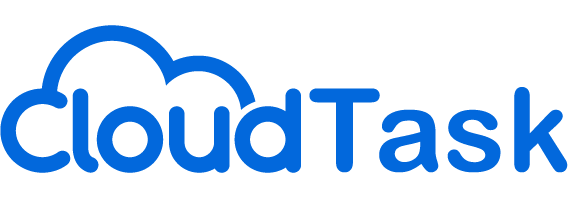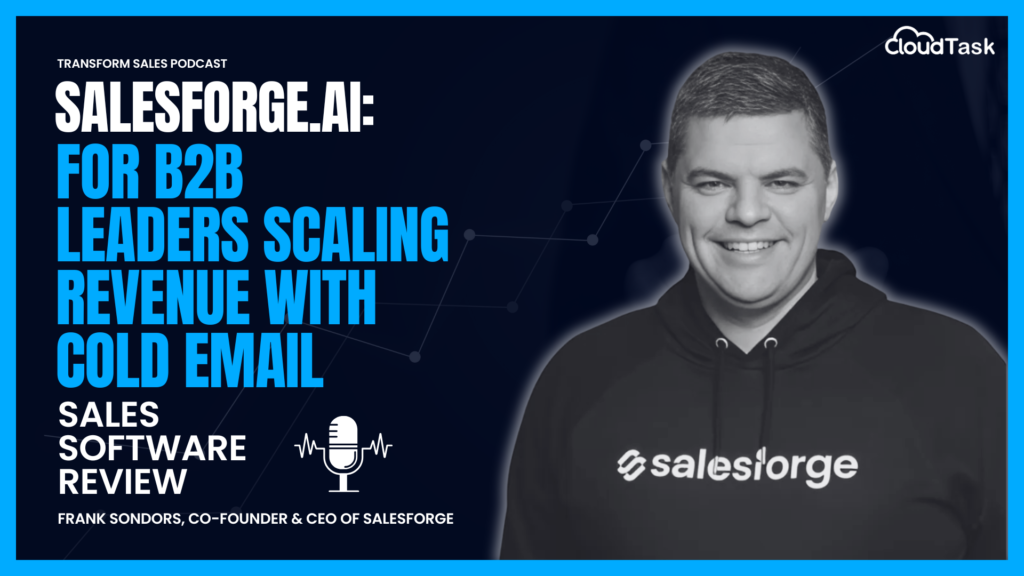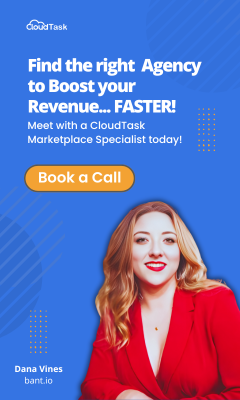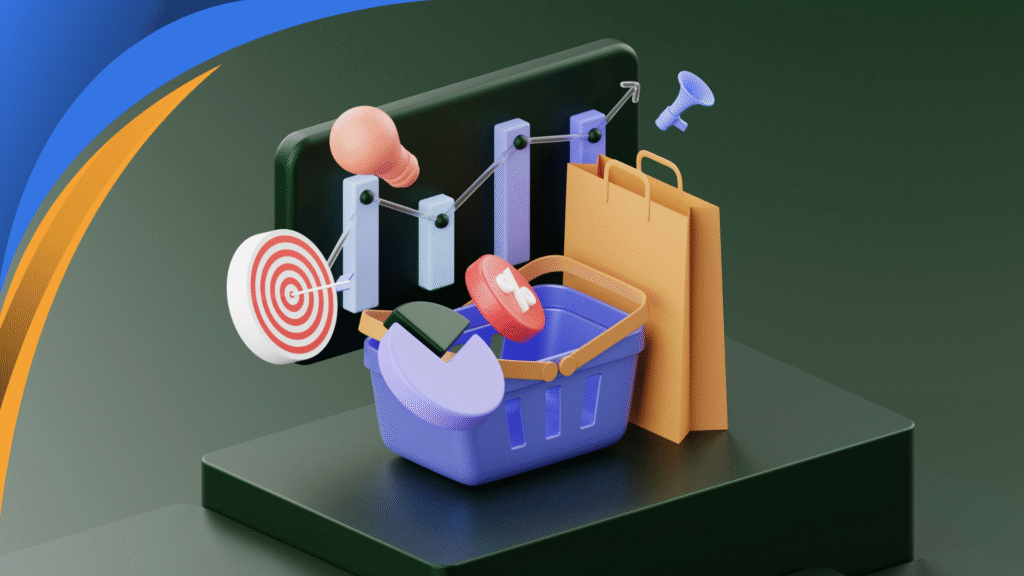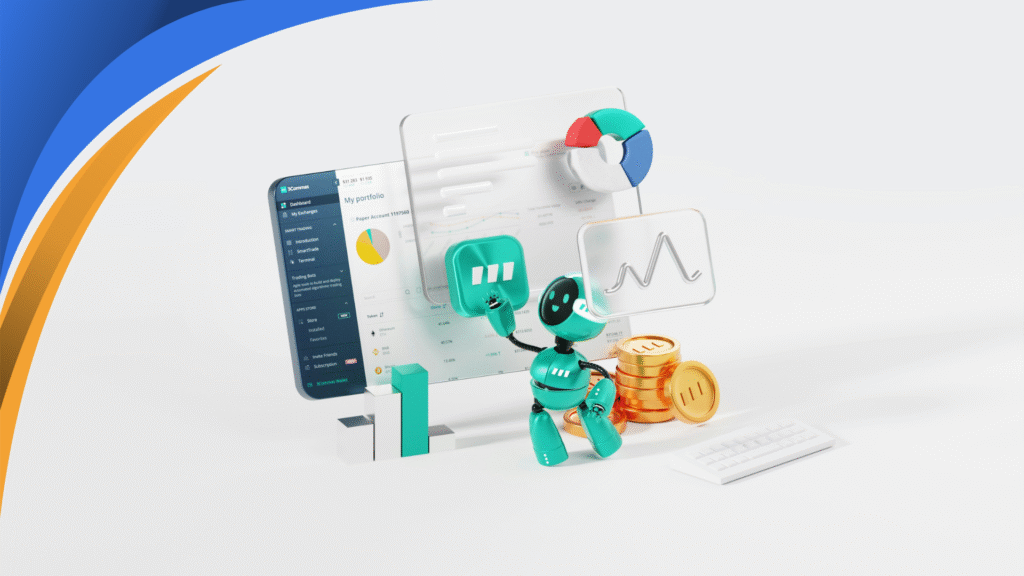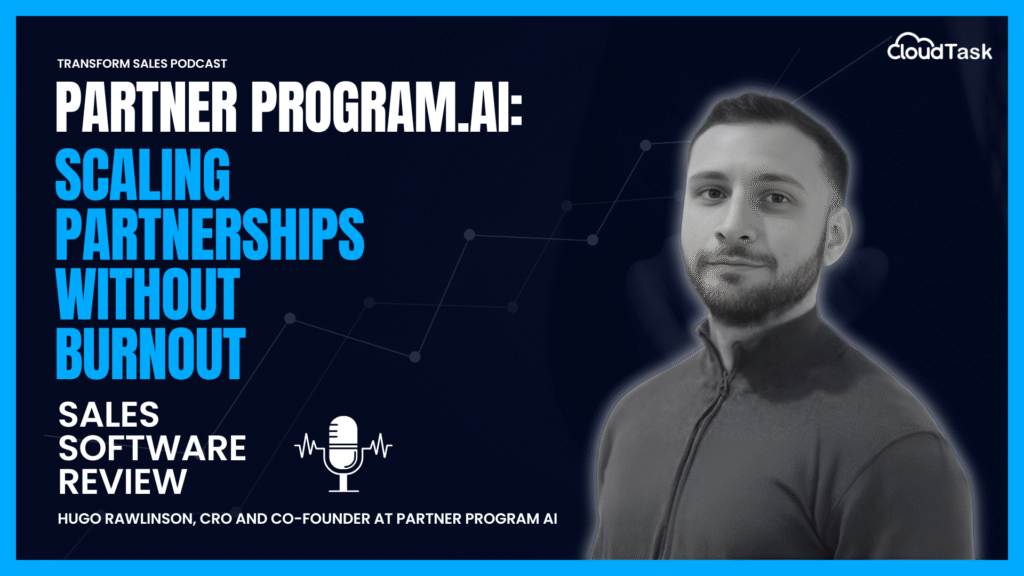In this episode of the Transform Sales Podcast: Sales Software Review Series, Amir Reiter, CEO of CloudTask, and Frank Sondors, Founder of SalesForge, discussed how sales teams can use SalesForge to improve cold email deliverability and engagement. In the conversation, they delved into the challenges of cold email outreach, why traditional methods no longer work as effectively, and how SalesForge is helping teams scale and optimize their cold emailing processes.
Salesforge uses AI to optimize lead generation, automate sales outreach, and streamline pipeline management, helping sales teams increase efficiency and close more deals
When it comes to Improving Cold Email Deliverability and Engagement, what alternatives were your customers most often using before buying your software?
Before adopting SalesForge, customers typically relied on a mix of traditional email marketing platforms, manual outreach methods, or less specialized software to send cold emails. Common alternatives included:
- Mailchimp: Known for its general email marketing capabilities, was often used for cold emailing campaigns. However, while it was useful for large-scale email distributions, it lacked the granular control and optimization necessary for cold email deliverability and engagement. Users often found themselves hitting spam filters and seeing low engagement.
- Outreach: Is a popular sales engagement platform that allows for sequencing cold emails and automating some parts of the sales process. However, its focus was broader and not solely on the specific challenges of cold email deliverability. Users frequently struggled with the need for multiple domain support and high-volume outreach, which could result in lower inbox placement and engagement rates.
- Manual outreach: Some sales teams, particularly smaller startups, relied on manual methods, using their primary domain and individual email accounts to send cold emails. This approach became increasingly ineffective as email service providers like Gmail introduced stricter spam detection algorithms. The manual process of warming up domains and managing large volumes of outreach was time-consuming and inefficient.
These methods often resulted in lower email deliverability, higher bounce rates, and poor engagement rates, which eventually led to teams seeking more specialized solutions like SalesForge.
What challenges were your customers running into that your software helped them overcome?
The key challenges sales teams faced when using these alternatives revolved around scalability, deliverability, and the complexity of managing cold email outreach effectively. Here are three major challenges:
- Domain deliverability issues: Many customers struggled with domain reputation issues. Since platforms like Mailchimp or Outreach didn’t fully address the need for managing multiple secondary domains or warming them up to build a good reputation, cold emails would often end up in the spam folder. With Gmail and other providers cracking down on cold email outreach, this issue became even more pressing.
- Solution: SalesForge solves this problem by allowing users to hook up unlimited domains and mailboxes. This enables sales teams to dilute their sending across different domains, reducing the risk of emails being flagged as spam. Additionally, SalesForge offers email warm-up features that build the reputation of these domains gradually, making sure they land in primary inboxes. This capability is crucial for cold emailing at scale.
- Email list management and cleanup: The alternatives often lacked effective list cleaning features, which led to high bounce rates and poor engagement. With manual outreach or basic tools, teams could not effectively identify invalid or outdated email addresses. This increased the chances of their emails being flagged as spam by email service providers.
- Solution: SalesForge helps users clean their email lists automatically, reducing the chances of bounces and improving email reputation. Additionally, the software integrates dynamic IPs and rotation of mailboxes, further reducing the likelihood of being flagged by spam filters.
- Lack of personalization and contextualization: Sales teams were also challenged by a lack of personalization in their cold emails. With traditional systems, emails often felt generic, and engagement rates were low as a result. Personalized emails are critical to improving cold email engagement, but most systems didn’t have the tools to tailor content based on the prospect’s website or LinkedIn profile.
- Solution: SalesForge addresses this challenge by using AI to personalize emails at scale. The software analyzes a prospect’s website or LinkedIn profile to generate dynamic content for email bodies and subject lines, ensuring each outreach feels relevant and tailored to the recipient.
What are the key features of SalesForge that help Improving Cold Email Deliverability and Engagement challenges?
Here are the three key features of SalesForge that directly address the challenges sales teams face with cold email deliverability and engagement:
Domain deliverability issues
- Situation: To improve cold email deliverability, sales teams need to scale their outreach across multiple domains without risking getting flagged as spam.
- Problem: Using a single domain for all cold email outreach results in poor email deliverability, as emails may be flagged by Gmail, Outlook, and other email providers due to excessive or aggressive emailing.
- Solution: SalesForge allows users to integrate unlimited domains and mailboxes, which enables email dilution. This feature helps to spread the email volume across multiple domains, reducing the chance of emails landing in spam folders. Furthermore, the system includes domain warm-up features to build and maintain a good domain reputation over time, ensuring that emails land in the primary inbox.
Email list management and cleanup challenges
- Situation: Effective list management and cleaning are essential for cold emailing success. Sales teams need a way to identify and remove invalid or outdated emails to prevent bounces.
- Problem: Traditional tools lack automatic list cleaning features, leading to increased bounce rates and lower engagement.
- Solution: SalesForge automatically cleans email lists, removing invalid addresses, and integrates dynamic IPs and mailbox rotation to avoid email bounces. This feature ensures that cold emails reach prospects with minimal disruption, increasing the likelihood of successful engagement.
Personalization and contextualization challenges
- Situation: Personalization is crucial for cold emailing success, but many traditional platforms struggle to deliver relevant and tailored messages at scale.
- Problem: Sales teams often send generic emails that do not resonate with recipients, leading to low response rates.
- Solution: SalesForge uses AI to analyze a prospect’s LinkedIn profile or website to create personalized email content. This allows sales teams to craft highly relevant emails that address the prospect’s specific needs, improving engagement and the likelihood of getting a positive reply.
What tasks, deliverables, and/or people need to be involved in setting up SalesForge for Outbound Sales and how long does it typically take to reach full productivity?
Setting up SalesForge for outbound sales involves several steps, but the software is designed to be intuitive and requires minimal effort to get started. Before using SalesForge, sales teams must acquire secondary domains and set them up within the system. This includes warming up the domains over a 2 to 4-week period, which is crucial to build domain reputation.
Teams need to upload and clean their email lists, ensuring that only valid prospects are targeted. Personalizing email templates and leveraging AI features for contextual outreach based on prospect profiles (website, LinkedIn) is necessary.
SalesForge typically takes about 2 to 4 weeks to fully warm up domains and build email reputation, depending on the volume of mailboxes being used. From a user perspective, even interns can manage the system effectively, as it is designed to be user-friendly and requires no deep technical knowledge.
Most companies can handle implementation internally, but some may choose to work with agencies or consultants, especially if they are serving multiple clients or need more specialized setup assistance.
What KPIs should sales teams use to evaluate their success with SalesForge for personalization strategies, and what quantifiable outcomes can they expect?
To evaluate the success of SalesForge, sales teams should focus on the following KPIs:
- Reply rates: The percentage of prospects who respond to cold emails. A higher reply rate indicates better personalization and engagement.
- Positive reply rates: This metric tracks the number of positive responses (e.g., scheduling meetings or expressing interest in further conversations).
- Meetings booked: SalesForge allows teams to track how many meetings are booked directly through the software, which is a crucial KPI for measuring the effectiveness of cold email campaigns.
- Conversion rates: The percentage of leads that convert into opportunities or sales, which directly measures the ROI of cold email campaigns.
In terms of quantifiable outcomes, sales teams can expect a significant increase in email engagement (e.g., reply rates, positive replies) and ultimately higher conversion rates, leading to a more efficient sales pipeline. Over time, SalesForge can help users scale their outreach and optimize for better performance across the sales funnel.
Conclusion
SalesForge has changed the way sales teams approach cold emailing, providing them with the tools they need to improve deliverability, engagement, and personalization at scale. By leveraging AI, managing multiple domains, and automating key tasks, sales teams can achieve higher success rates and generate more pipeline growth. Whether you’re a small startup or an enterprise organization, SalesForge offers the features and scalability needed to stay ahead in the competitive world of outbound sales.
